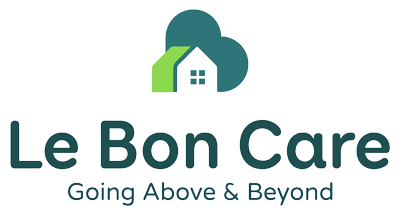Supported Independent Living (SIL) is a vital service for individuals with disabilities, offering the necessary support to live as independently as possible. This support ranges from help with daily tasks and personal care to assistance with engaging in community activities. SIL is tailored to meet each individual’s unique needs, promoting autonomy and an enriched life within the community.
Funding for SIL
To access SIL, individuals need to apply for funding through the National Disability Insurance Scheme (NDIS) in Australia. This process involves demonstrating the need for SIL through assessments and planning meetings. It’s essential to articulate how SIL supports the individual’s goals, especially regarding living arrangements and independence.
Required Evidence for SIL Funding
Gathering the right evidence for Supported Independent Living (SIL) funding is a crucial step in the application process. The evidence you compile needs to paint a detailed picture of the individual’s daily life, their challenges, and how SIL can make a meaningful difference. Here’s a breakdown of the essential evidence needed:
Health Assessments and Medical Reports:
- Detailed assessments from health professionals, including occupational therapists, psychologists, and physiotherapists.
- Medical reports that outline diagnoses, the extent of the disability, and its impact on daily functions.
Daily Living Skills Assessments:
- Evaluations that detail the individual’s capability in managing daily tasks such as personal hygiene, cooking, cleaning, and shopping.
- Recommendations on the type and level of support needed to improve independence in these areas.
Personal Statements:
- A first-person account of how the individual’s disability affects their daily life and personal goals.
- Descriptions of past and current living situations, and how SIL could enhance their quality of life.
Behaviour Support Plans (if applicable):
- Documents outlining any behavioural challenges, existing strategies, and how SIL could support or improve these plans.
Evidence of Current and Past Supports:
- Information on previous and current support services, including what has worked well and what hasn’t.
- Insights into how SIL could fill existing gaps or provide a better support structure.
Housing Information:
- Details about the individual’s current living situation and the suitability of the environment for their needs.
- For those seeking to move, information on the proposed new living arrangement and its necessity for improved independence.
Care Plans:
- A comprehensive plan outlining the individual’s needs, goals, and specific ways SIL can assist in achieving these goals.
- Includes a detailed support schedule, the types of activities needing assistance, and the desired outcomes of receiving SIL.
Collecting this evidence may require coordination with various professionals and personal reflection to ensure all necessary information is provided. This evidence not only demonstrates the need for SIL but also helps in tailoring the support to the individual’s specific requirements, facilitating a path towards greater independence. To help with this process, your support coordinator and recovery coach can assist.
Living Arrangements with SIL Funding
Choosing the right living arrangement is a pivotal decision for individuals receiving SIL funding. The living environment plays a crucial role in ensuring the individual’s safety, comfort, and overall well-being. Here’s a closer look at the various living arrangements available to those with SIL funding, highlighting the features and benefits of each to help tailor the choice to the individual’s unique needs:
| Living Arrangement | Features | Benefits | Considerations |
| Private Residences | Living in a privately owned or rented house or apartment. | Maximises independence and privacy; can be customised to the individual’s needs and preferences. | May require modifications to ensure accessibility and safety. |
| Shared Accommodation | Living with roommates in a house or apartment, sharing common spaces while having a private room. | Offers a balance between independence and community living; shared costs can make this an affordable option. | Requires compatibility between housemates and shared responsibility for the living environment. |
| Specialist Disability Accommodation (SDA) | Housing specifically designed or modified for people with significant functional impairment or very high support needs. | Tailored to provide the highest level of accessibility and support; often includes specialised design features for safety and independence. | Availability may be limited in certain areas; eligibility criteria apply. |
| Community Housing | Housing within a community setting, managed by non-profit organisations or government bodies, designed to support people with disabilities. | Combines affordable housing with a supportive community environment; may offer additional communal services or supports. | May have waiting lists or specific eligibility requirements. |
Each of these options comes with its set of advantages, catering to different needs, preferences, and levels of required support. The choice should consider the individual’s desire for independence, social interaction, and the specific accommodations needed for their disability. It’s also vital to explore the availability of these options in the desired area and any potential financial implications. Ultimately, the best living arrangement is one that not only meets the individual’s needs but also supports their goals and enhances their quality of life.
SIL Approval Timeframe
The timeframe for SIL approval can vary, influenced by factors like the complexity of needs and the thoroughness of the submitted evidence. The process involves reviewing the SIL quote and ensuring it aligns with the individual’s goals. While some may receive approval within a few weeks, others might wait several months. Patience and communication with involved parties are key during this period.
Alternatives if SIL Isn't an Option
Not everyone may qualify for Supported Independent Living (SIL) funding, but that doesn’t mean there aren’t other avenues to support independence and quality of life. Various alternatives can offer valuable assistance, catering to different needs and circumstances. Here’s a detailed look at some of these alternatives:
| Alternative Option | Features | Benefits | Considerations |
| In-Home Support Services | Assistance with daily tasks such as personal care, meal preparation, and household chores, provided in the individual’s home. | Enables individuals to continue living in their own homes while receiving the necessary support. | The level and type of support can be customised, though it may not be as extensive as SIL. |
| Home Modifications | Changes or adaptations made to the home, such as ramps, grab bars, or modified bathrooms. | Improves safety and accessibility, allowing for greater independence at home. | Must be planned carefully to address specific needs; may require professional assessment. |
| Assistive Technologies | Devices or systems that aid in performing tasks, ranging from mobility aids to communication devices. | Enhances independence in daily tasks and communication; can be tailored to individual needs. | Requires assessment to find the right technologies; some may have a learning curve. |
| Individual Living Options (ILO) | Customised living arrangements designed around the individual’s preferences, needs, and lifestyle. | Offers flexibility in living arrangements; tailored support can include co-residency, host arrangements, or living alone with support networks. | Involves a detailed planning process to ensure the right mix of supports and living conditions; may require time to establish and adapt. |
| Short Term Accommodation/Respite | Temporary accommodation that includes support, often used for respite for the individual or their caregivers. | Provides a break for caregivers and a change of scenery for individuals, which can be refreshing and revitalising. | Useful for emergency situations or when primary caregivers are unavailable; booking in advance is often necessary. |
| Medium Term Accommodation | Transitional housing provided for a defined period, often used while waiting for long-term housing to become available. | Bridges the gap between immediate housing needs and the availability of a long-term solution. | Designed for specific circumstances, such as post-hospitalisation or while waiting for accessible housing modifications. |
| Community Nursing Services | Medical care and health management provided at home or in community settings. | Ensures health needs are met without the need for hospital visits; supports medication management, wound care, and other health services. | Particularly beneficial for individuals with medical conditions requiring regular monitoring. |
Exploring these alternatives requires a clear understanding of the individual’s needs, preferences, and the goals they aim to achieve. Working with a support coordinator, planner, or relevant professionals can provide guidance in navigating these options and finding the best solutions.
Supported Independent Living offers a pathway to independence for individuals with disabilities, tailored to fit each person’s unique situation. Understanding the process—from funding and required evidence to potential living arrangements and the approval timeframe—is crucial. For those who may not qualify for SIL, various alternatives still provide support and opportunities for a fulfilling life.
If you have any questions about obtaining SIL in your plan, feel free to contact our friendly team at Le Bon Care.









